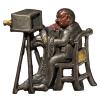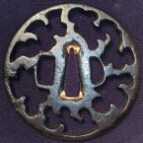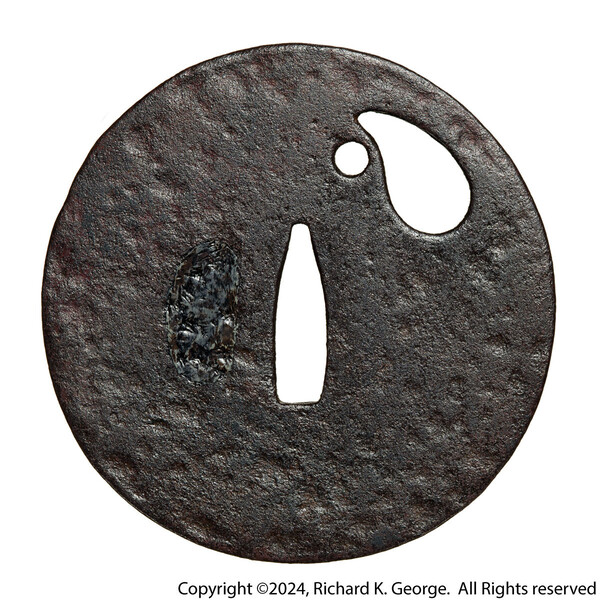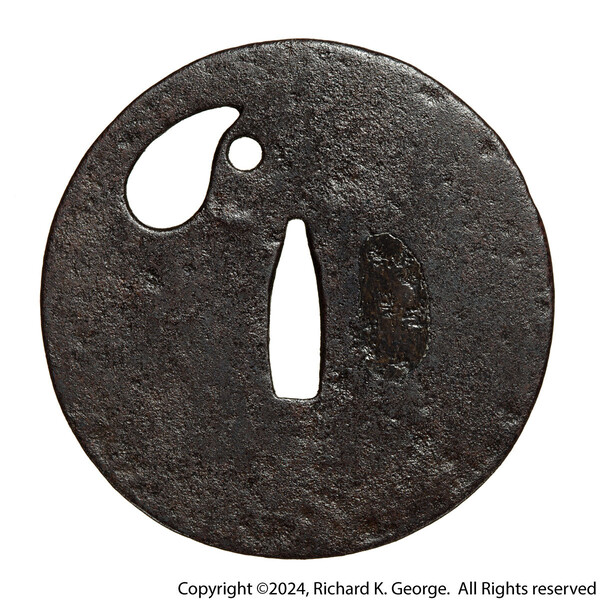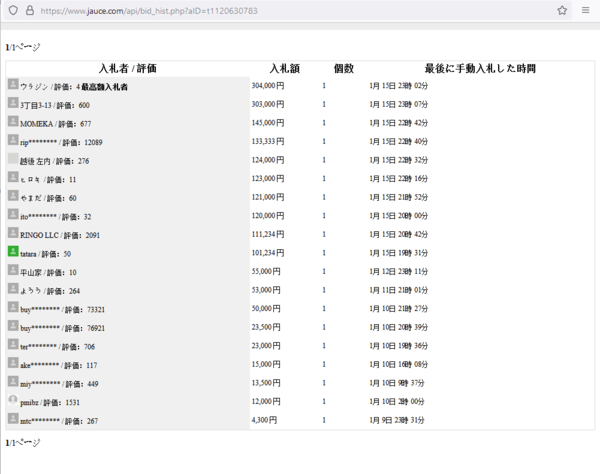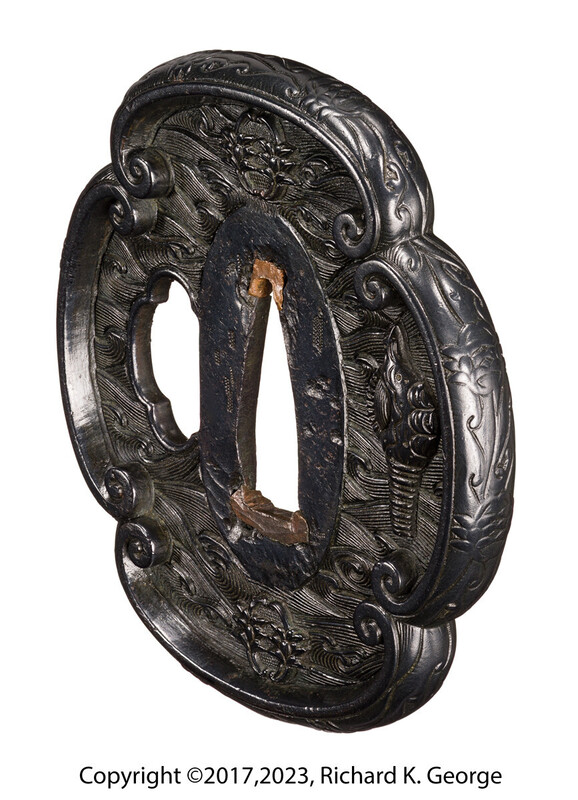-
Posts
817 -
Joined
-
Last visited
-
Days Won
8
rkg last won the day on December 26 2021
rkg had the most liked content!
About rkg

Contact Methods
-
Website URL
http://www.rkgphotos.com
Profile Information
-
Location:
Portland, Oregon, USA
Profile Fields
-
Name
Richard George
Recent Profile Visitors
The recent visitors block is disabled and is not being shown to other users.
rkg's Achievements
-
Mauro and everybody else who replied - thanks! Best, rkg (Richard George)
-
I haven't been able to shoot anything for over a year due to health issues - but I FINALLY got the studio cleared out, the various wind up stands in place, figured out how photoshop photoshop had screwed up my workflow (and workarounds), etc, and... Just for grins, here's a couple of images of a ko-tosho (or at least that is what the NBTHK thought it was, FWIW) I picked up off of yahoo!Japan not too long ago. I am not sure what the theme is, comments about what it might be are appreciated. The little beastie has a black coating - when I get some more time I will have to ascertain if it's black lacquer (I that might be what is going on) or if somebody put black wax or something on it. I need to pull down the microscope and fix that workflow next, thought that might take a while as I have a whole bunch of other fittings to try imaging. The piece measures74.2mm(H) X 73.3mm(W). It measures 2.9mm(max) at the seppa area and tapers to 2.3mm (max) at the mimi. rkg (Richard George)
- 7 replies
-
- 12
-

-

-
That would be the arsenic leaching out of the lead Best, rkg (Richard George)
-
you might as well use copper or silver. As an aside, does anybody use copper pennies (if you're us based) for this, or do you scare up pure copper or yamagane? (not that I'm suggesting defacing US currency as that would be illegal, but...) Best, rkg (Richard George)
-
Another pervasive surface hack used on iron pieces like yours is the dreaded "brown wax". A lot of material coming out of Japan these days suffers from this and sometimes the wax is laid on like putty to hide a multitude of sins. you can use some high test isopropyl alcohol on a q-tip somewhere inconspicuous, and if it comes off brown... Clear wax over a good surface with no active rust is a personal choice (and it does make a lot of pieces look better), but the hackers often use the brown stuff to hide active rust issues, deep pitting, areas of corrosion (that look like sandpaper), cracks, even out botched repatination, etc. This is bad because the corrosion continues under the surface - wax is permeable and the rust can still get what it needs to continue reacting. The sad part is that sometimes they'll use the brown wax even when there's nothing to hide - just as part of their rework process - I guess they think it makes the piece look better And.. you often can't just clean it off because it opens a whole can of worms to try and conserve the result. Best, rkg (Richard George)
-
Darrel, Old school gray cards were more for setting tone than being neutral gray. Sometimes the greys weren't neutral - fortunately, a lot of the newer ones have a true gray so you can set the colors/exposure accurately - FWIW, here's a card that also incorporates a white surface (a lot of photo editing tools play better with a white card than a gray card)as well as a scale - I normally use a version of these that runs the scale down the side instead of just a short scale at the end: https://www.bhphotov...ration_Card_101.html They are real handy as you can leave them somewhere in the frame without it taking up too much room when shooting tosogu. Best, rkg (Richard George)
-
Lotsa gimei pieces showing up on YJ lately... rkg (Richard George)
-
Now that we are talking about cataloging... Here's an old thread that shows now I label tsuba boxes. I use a 3M product where they put post-it material on the back of photo paper. I choose it because its supposedly archival and also theoretically doesn't damage whatever is on the surface (it was developed to be able to put markers in old books after all) - not a big deal if the box is new, but if you want to provide info on a piece with a hakogaki by somebody famous, you probably don't want to damage anything (and on those I usually only put end labels in any case). The problem is that they lay on the adhesive in strips which means you have to be careful about label placement - it works best if there is adhesive at both ends so you have to place it to do that. because most of my items are stored stacked in a safe, In addition to a label on the top, I also put a label on the end so I can look for boxes w/o having to remove anything. This method also led me to start having decent tsuba box bags made that are open at one end. I saw a few box bags done this way on Yahoo!Japan and the light bulb went on... I would also add that another way to store them is like they did in the old days - they would just fold the piece in several pieces of washi and/ or mulberry paper (having a senior moment on the correct name) with a terse label on the outside saying what the piece is. This whole whizzy box thing really a pretty recent development, as I've seen these older "folded paper" storage dated as late as the taisho period. I have seen quite a number of "daimyo" kodogu that have been stored that way for a long time. Of course time marches on - now, most of the examples I've seen in hand have whizzy wood boxes with pull out sections to store all the extant old packaging. This is somewhat common on old Goto pieces that still have a goto kanteisho for example. I actually have done washi wrappers on a few pieces and put that whole assembly into a box - its lots easier to make an otoshi for rather than for the piece itself. The way the Japanese fold up things doesn't work with my brain well - I managed to get an example of one of these wrappers so I could use it as a model. Best, rkg (Richard George)
-
Another option is to just make a new liner - I know Ford had an article up on this, but weren't there a few others out there? I probably have something squirreled away, but.... Best, rkg (Richard George)
-
- 1 reply
-
- 1
-

-
I am late to the thread, as usual. Nice looking piece, Congratulations on the results! Best, rkg (Richard George)
-
Is the surface really that grey color? If so, that and the alternating coarse surface corrosion and the not really well defined seppa zuri makes me think it might have been burned at some point and the smooth surface might be scale. That does appear to be an early hitsu, though its hard to say if it is original to the piece or added later. From the thickness, I would guess its pre-edo, though kozuka came on the scene fairly late, so if original sometime at the end of the muromachi/ or momoyama might be a better date for the piece. On the other hand, older pieces often were flat on one side and "worked" on the other like you are describing, though typically the mimi is thinner than the seppa dai area on pieces that show that. But hey, they're all individuals at that point, so... Best, rkg (Richard George)
-
rkg started following Tsuba in everyday objects - the culture of Tsuba
-
Does anybody have any idea what that tanto sized tsuba with the base attached that Dale posted might have been used for? I was trying to figure it out, and can't: https://www.jauce.com/auction/b1113231328 thx, rkg (Richard George)
-
- 7 replies
-
- 11
-

-

-

-
Peter, Fantasy design = mon I guess... The NBTHK most recently called the piece a tachishi, but its stranger than that - the tsuba is shaped like a 4 lobed mokko tachi tsuba (has that "waist" thing going on where the mune side of the tsuba is wider than the edge side), but has an ubu kozuka ana (and the decorations are meant to be viewed with the blade edge facing upward). Thanks to everybody who replied to this fruitful discussion. Best, rkg (Richard George)


